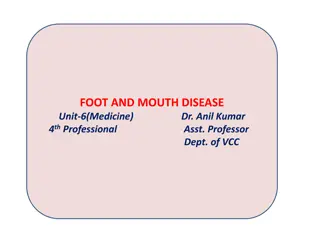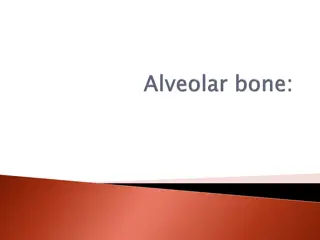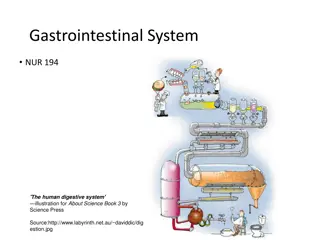
Hyperdontia: Understanding and Managing Extra Teeth in the Mouth
Hyperdontia, a dental anomaly characterized by the presence of extra teeth, can affect oral health, appearance, and overall functionality. While having a perfect smile often involves a set of 32 teeth, individuals with hyperdontia may develop supernu
Download Presentation

Please find below an Image/Link to download the presentation.
The content on the website is provided AS IS for your information and personal use only. It may not be sold, licensed, or shared on other websites without obtaining consent from the author. Download presentation by click this link. If you encounter any issues during the download, it is possible that the publisher has removed the file from their server.
E N D
Presentation Transcript
WELCOME ORTHODONTICS welcomeorthodontics.com
HYPERDONTIA: UNDERSTANDING AND MANAGING EXTRA TEETH IN THE MOUTH Hyperdontia, a dental anomaly characterized by the presence of extra teeth, can affect oral health, appearance, and overall functionality. While having a perfect smile often involves a set of 32 teeth, individuals with hyperdontia may develop supernumerary teeth additional teeth that grow in unusual locations or positions. This condition, though relatively uncommon, can pose unique challenges requiring specialized care and treatment. In this article, we will explore what hyperdontia is, its causes, symptoms, potential complications, and the management options available to ensure optimal oral health. WHAT IS HYPERDONTIA? Hyperdontia refers to the presence of more teeth than the usual 32 in the human mouth. These extra teeth, known as supernumerary teeth, can appear anywhere along the dental arch, both in the primary (baby) and permanent (adult) teeth.
TYPES OF SUPERNUMERARY TEETH Supernumerary teeth are classified based on their location and shape: Location: 1. Mesiodens: Extra teeth located between the two central upper front teeth. Paramolars: Extra teeth located near the molars. Distomolars: Extra teeth located behind the third molars (wisdom teeth). Pre-molars: Extra teeth located near the premolars. Shape: 2. Conical: Peg-shaped teeth with a simple root structure. Tuberculate: Barrel-shaped teeth with multiple cusps. Supplemental: Resemble regular teeth in size and shape. Odontomes: Irregular masses of dental tissue.
WHAT CAUSES HYPERDONTIA? The exact cause of hyperdontia remains unclear, but several factors have been associated with its development: Genetics: Hyperdontia tends to run in families, indicating a hereditary component. Syndromes: Certain genetic disorders, such as Gardner s syndrome, Cleidocranial dysplasia, and Ehlers-Danlos syndrome, increase the likelihood of supernumerary teeth. Developmental Issues: Overactivity of dental lamina (tissue responsible for tooth development) during early tooth formation may lead to extra teeth. While hyperdontia is rare, occurring in approximately 1-3% of the population, it is more commonly observed in males than females. SYMPTOMS AND DIAGNOSIS Hyperdontia often goes unnoticed, especially if the extra teeth remain unerupted (hidden beneath the gums). However, certain symptoms can indicate its presence: Crowded teeth or overlapping Difficulty chewing or biting Delayed eruption of permanent teeth Misalignment of teeth or jaws Jaw pain or discomfort A dental examination is essential for diagnosing hyperdontia. Dentists typically use: X-rays: To identify unerupted supernumerary teeth. 3D Imaging: Advanced imaging techniques like CBCT scans can provide detailed visuals of the extra teeth and their impact on surrounding structures.
POTENTIAL COMPLICATIONS OF HYPERDONTIA If left untreated, hyperdontia can lead to several complications, including: Crowding: Extra teeth can push other teeth out of alignment, leading to overcrowding and orthodontic issues. Impacted Teeth: Supernumerary teeth can block the eruption of permanent teeth, causing them to remain stuck in the gums. Infections and Cysts: Unerupted teeth can create cysts or infections, damaging nearby teeth and bone. Speech Difficulties: Misaligned teeth can impact speech development, particularly in children. Aesthetic Concerns: Visible extra teeth may affect confidence and self-esteem. MANAGING HYPERDONTIA: TREATMENT OPTIONS Treatment for hyperdontia depends on the location, number, and impact of the extra teeth. Dental professionals tailor the approach based on individual needs. 1. Monitoring For cases where supernumerary teeth are asymptomatic and do not interfere with oral health, dentists may recommend regular monitoring. Routine check-ups and X-rays help track changes and detect potential issues early. 2. Extraction Removing extra teeth is a common treatment for hyperdontia, especially when complications arise. Surgical Extraction: For unerupted or impacted teeth, surgical removal is necessary. This procedure involves a minor operation under local or general anesthesia. Simple Extraction: If the extra tooth has erupted, it can often be removed through a straightforward extraction process. 3. Orthodontic Treatment After extraction, orthodontic intervention may be needed to correct alignment issues caused by the extra teeth. Treatment options include: Braces: Traditional braces are effective in addressing crowding, misalignment, and spacing issues. Invisalign: Clear aligners like Invisalign offer a discreet way to correct alignment problems resulting from hyperdontia. 4. Surgical Correction In rare cases of severe complications, such as cyst formation or jawbone damage, surgical correction beyond tooth extraction may be required.
LIVING WITH HYPERDONTIA: ORAL HEALTH TIPS Maintaining good oral hygiene is essential for individuals with hyperdontia to minimize complications: Brush Twice Daily: Use fluoride toothpaste to prevent decay and plaque buildup. 1. Floss Regularly: Clean between teeth to reduce the risk of gum disease. 2. Visit the Dentist: Schedule regular dental check-ups for monitoring and professional cleaning. 3. Use Mouthguards: If the extra teeth cause jaw pain or clenching, a custom mouthguard can provide relief. 4. HYPERDONTIA IN CHILDREN: SPECIAL CONSIDERATIONS Hyperdontia is often detected in children during routine dental visits. Early diagnosis and treatment are critical for preventing long-term complications. Pediatric dentists may opt for extraction followed by orthodontic intervention to ensure proper alignment of the permanent teeth. Parents should look out for signs of crowding, delayed tooth eruption, or misalignment and consult a dentist promptly if concerns arise.
CONCLUSION Hyperdontia may seem like a daunting dental condition, but with early diagnosis and appropriate treatment, its impact can be effectively managed. Whether through monitoring, extraction, or orthodontic intervention, dental professionals can help restore both function and aesthetics to ensure a healthy smile. At Welcome Orthodontics, we specialize in personalized orthodontic care for conditions like hyperdontia. Our expert team is dedicated to providing comprehensive solutions tailored to your needs, helping you achieve optimal oral health and confidence. Schedule your consultation today and let us guide you toward a healthier, brighter smile.






















